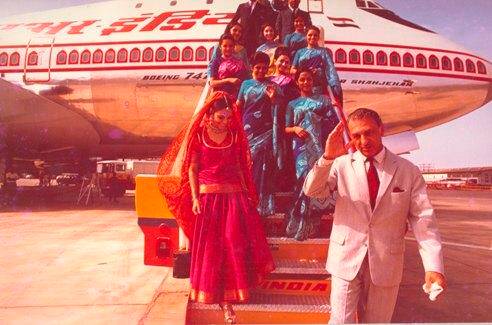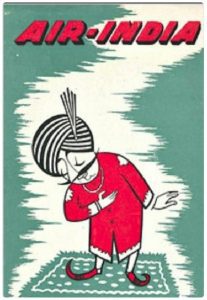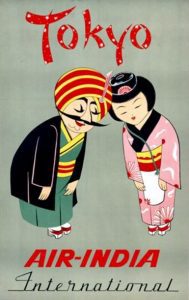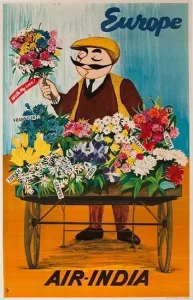
A history of Air India: The Maharaja’s journey through the years
Tata Sons’ takeover comes more than half a century after the country’s biggest conglomerate ceded control of an airline that is started almost 90 years ago to the state

Tata Sons has taken over Air India again. A committee of ministers on the disinvestment of Air India approved the takeover earlier this month.
Tata Sons’ takeover comes more than half a century after the country’s biggest conglomerate ceded control of an airline that is started almost 90 years ago to the state.
Here is a history of the airline that once defined the lofty ambitions of a newly independent country, but which in recent years became a byword for mismanagement and loss.

1932
JRD Tata founds Tata Airlines as a division of Tata Sons Ltd (now Tata Group).
July 29, 1946
After the Second World War, regular commercial services in India go back to normal. Tata Airlines changes its name to Air India and becomes a public limited company.
June 8, 1948
Air India introduces a regular service from Bombay to London. Two years later, it starts regular flights to Nairobi.

1954
Air India takes delivery of its first L-1049 Super Constellations, and inaugurates services to Tokyo, Bangkok, Hong Kong and Singapore.
1960
With the introduction of the first Boeing 707-420 aircraft, the airline starts using jets.
June 1962
Air India becomes the world’s first all-jet airline.
1970
Air India moves its offices to downtown Bombay.
1986
Airline takes delivery of the Airbus A310-300, and becomes the largest operator of this type of aircraft in passenger service.
1988
The company starts using two Boeing 747-300Ms in a mixed passenger-cargo configuration.
August 13, 1990 to October 20, 1990
Air India helps evacuate 170,000 people from Kuwait before the First Gulf War. Airline enters the Guinness Book of World Records for the most people evacuated by a civil airliner.
1993
Air India’s first Boeing 747-400, named Konark, operates the first non-stop flight between New York City and Delhi.

December 3, 1995
After a five-year absence from Amsterdam, twice-a-week flights are introduced from Mumbai, via New Delhi and Frankfurt.
1996
Air India starts using its second US gateway at Chicago’s O’Hare International Airport.
May 28, 1997
Air India launches its website, www.airindia.com. On November 1 the same year, a major global alliance ties Air India and Air France.
1999
The airline opens its dedicated Terminal 2-C at the newly renamed Chhatrapathi Shivaji International Airport in Mumbai.
2000
Services to Shanghai and to Air India’s third US gateway at Newark Liberty International Airport in Newark are introduced.
November 1, 2001
Air India launches its Frequent Flyer program (‘Flying Returns’) for the Canada, UK and USA routes.
March 20, 2003
Air India dedicates several special flights to Kuwait, with the purpose of evacuating Indian citizens from Iraq.
August 10, 2004
A strategic alliance is signed with Lufthansa.
April 2005
Launch of Air India Express, Air India’s low-cost airline.
June 27, 2007
Air India initiates its cargo service. By the end July, airline starts carrying non-stop flights to USA.
December 2007
Air India is invited to join the Star Alliance, and is set to become a full member in 2010. However, by August 2011 it is considered that Air India does not meet the minimum standard requirements for membership, so the invitation is postponed.
March 29, 2009
Air India makes Frankfurt Airport its European hub for transatlantic North American operations. On December 1 the same year, the daily non-stop flight on the Delhi-New York route is extended to Washington, DC.
2012
The airline posts significant losses and slips to fourth place in the Indian market, behind Jet Airways, IndiGo and SpiceJet.
2013
Air India clears some of its debts by selling and leasing back the newly acquired Boeing 787 Dreamliners. Also, as part of the financial restructuring, the airline sells five of its eight Boeing 777-200LR aircraft to Abu Dhabi’s Etihad Airways.
July 2014
Air India becomes the 27th member of Star Alliance. A Boeing 787 Dreamliner, a Boeing B777-300 and an Airbus A320-200 are painted with special Star Alliance livery.
2015
The Maharajah, Air India’s mascot adopted in 1946, is given a makeover.
October 2016
Air India changes the Delhi-San Francisco route previously operated over the Atlantic Ocean to fly over the Pacific Ocean, in order to take advantage of the jet stream and use less fuel.
February 2017
Air India takes delivery of its first Airbus A320neo (new engine option) and plans to lease 13 more such re-engined narrowbody planes. The A320neo is configured in two classes: Economy and Business.
2018
The Indian government tries to privatise Air India by selling 76 per cent of its stake in the national carrier, but fails because no private-sector buyer expresses interest.
January 2020
The government approves a new proposal to divest 100 per cent stake in Air India, which is followed by an Expression of Interest document the same month.
October 2021
Tata Sons takes over the airline once again, after more than 50 years.

